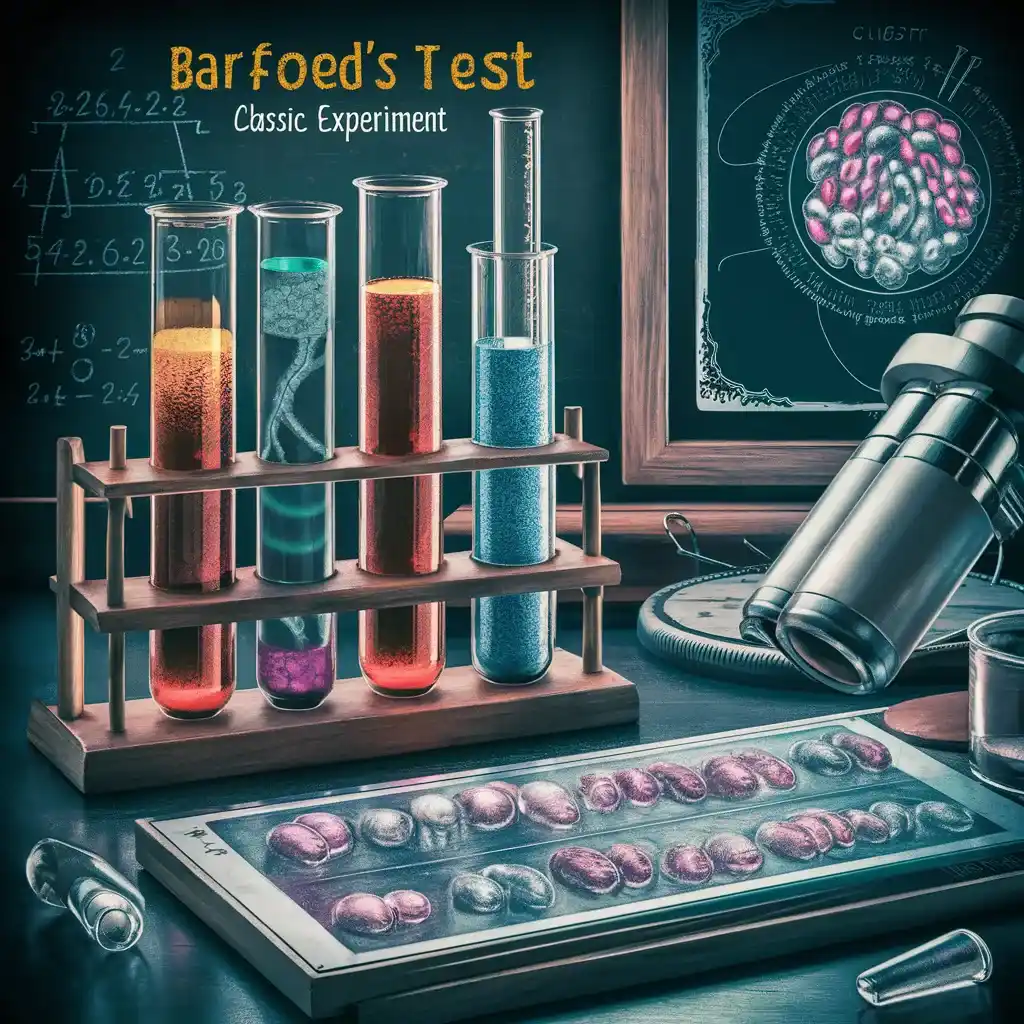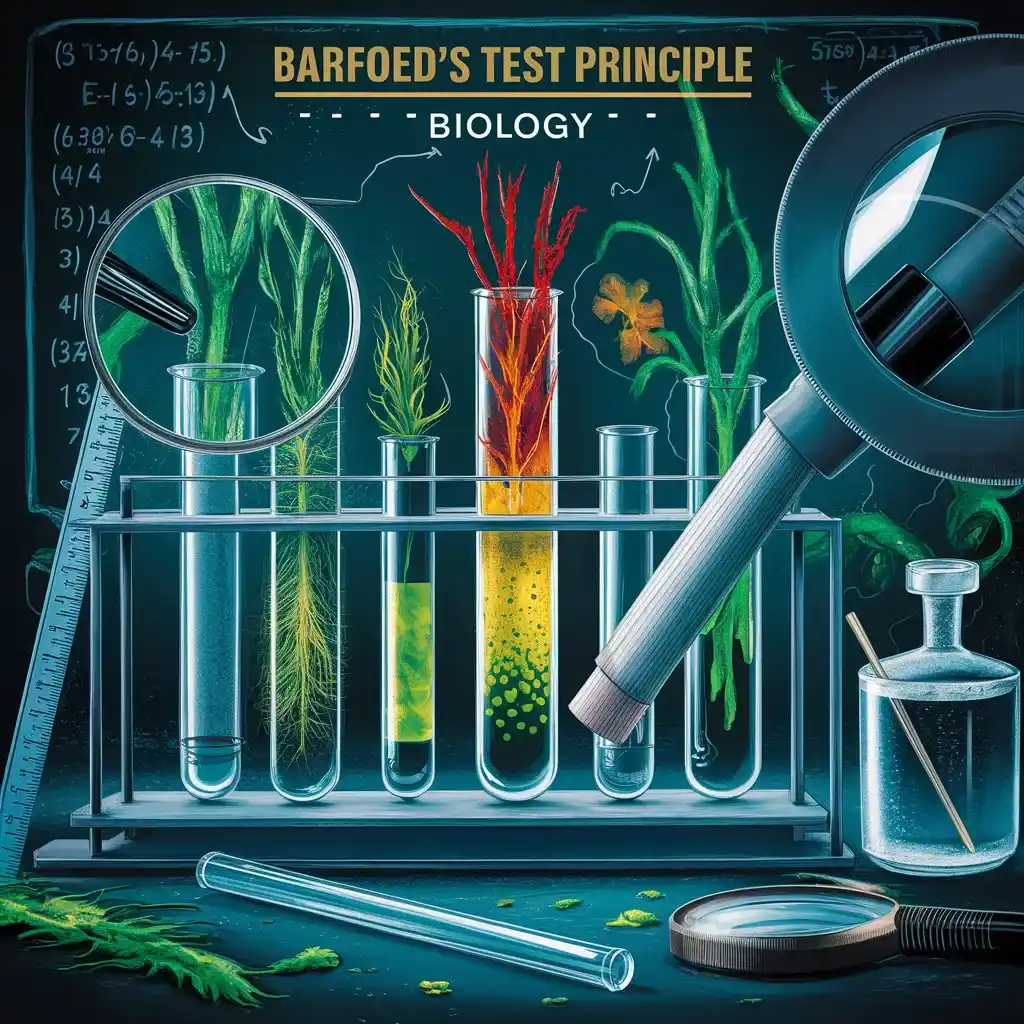The Barfoed’s test is a chemical technique that determines whether or not a sample contains simple sugars. Barfoed’s reagent is a particular liquid that we can mix with the sample and heat to examine if the liquid changes color. If the sample becomes reddish-brown in color, it indicates the presence of monosaccharides, which are simple sugars. In laboratory and food testing, this test is useful for determining the types of sugars present in foods and beverages.
Table of Contents
Definition

Barfoed’s test is a chemical test used to distinguish between monosaccharides and disaccharides according to their capacity to generate copper(I) oxide (Cu2O) in an acidic solution. It depends on monosaccharides’ reducing ability to create copper(I) oxide in an acidic environment. A reddish-brown tint is produced when the sample is heated and combined with Barfoed’s reagent (copper acetate in acetic acid). This suggests the presence of monosaccharides. To identify reducing sugars, this technique is frequently used in food science and biochemical analysis.
Principle

Barfoed’s test is based on the redox reaction that occurs in an acidic media between monosaccharides and copper ions. Monosaccharides, like fructose and glucose, have free ketone or aldehyde groups that can function as reducing agents. These monosaccharides oxidize, converting cupric ions (Cu²⁺) to cuprous ions (Cu⁺), in the presence of an acidic environment supplied by Barfoed’s reagent (copper acetate dissolved in acetic acid). Insoluble copper(I) oxide (Cu3O) is formed as a reddish-brown precipitate as a result of this reduction reaction. This color shift indicates that there are monosaccharides in the sample solution.
Disaccharides are not easily subjected to this reaction until they are hydrolyzed into monosaccharides because they lack free reducing ends. Based on the reducing characteristics of monosaccharides and disaccharides in an acidic environment, Barfoed’s test is a valid technique for making this distinction.
Procedure
- Prepare a tiny amount of the sample solution, which usually includes the carbohydrate that needs to be examined.
- Include the sample solution with the same volume of Barfoed’s reagent.
- For a predetermined amount of time—typically three to five minutes—heat the mixture in a water bath or boiler.
- .Check the solution’s color for any changes.
Result
- Reducing sugars, especially monosaccharides, are present if the solution turns reddish-brown after a certain amount of heating time.
- The precipitation of copper(I) oxide is what gives the area its reddish-brown hue.
- The reduction of cupric ions (Cu²⁺) to cuprous ions (Cu⁺) by the reducing sugars in the sample is shown by this color shift.
- This color shift is usually not seen in non-reducing sugars, like disaccharides, unless they are degraded into monosaccharides.
- The lack of reducing sugars in the sample or their low concentration is indicated by a long heating period that results in no color change or very little color change.
Uses
- Making the distinction between non-reducing disaccharides and reducing monosaccharides.
- Determining whether reducing sugars, especially monosaccharides like fructose and glucose, are present.
- The presence of monosaccharides can be determined by looking for a reddish-brown precipitate of copper(I) oxide in an acidic environment.
- Frequently applied in quality assurance, food science, and biochemical analysis.
- Beneficial for analyzing carbohydrates in food products and biological materials.
- Supports the evaluation of food products’ quality and freshness.
- A useful tool in studies on the content and metabolism of carbohydrates.
Frequently Asked Question(FAQ)
What is Barfoed’s test used for?
By comparing the ability of monosaccharides and disaccharides to decrease copper ions in an acidic media, Barfoed’s test can be used to differentiate between the two types of carbohydrates.
How does Barfoed’s test work?
In order to perform the test, the sample must be heated and combined with Barfoed’s reagent. Reddish-brown precipitate is formed when monosaccharides convert copper ions (Cu²⁺) to copper(I) oxide (Cu₂O).
Related Articles

